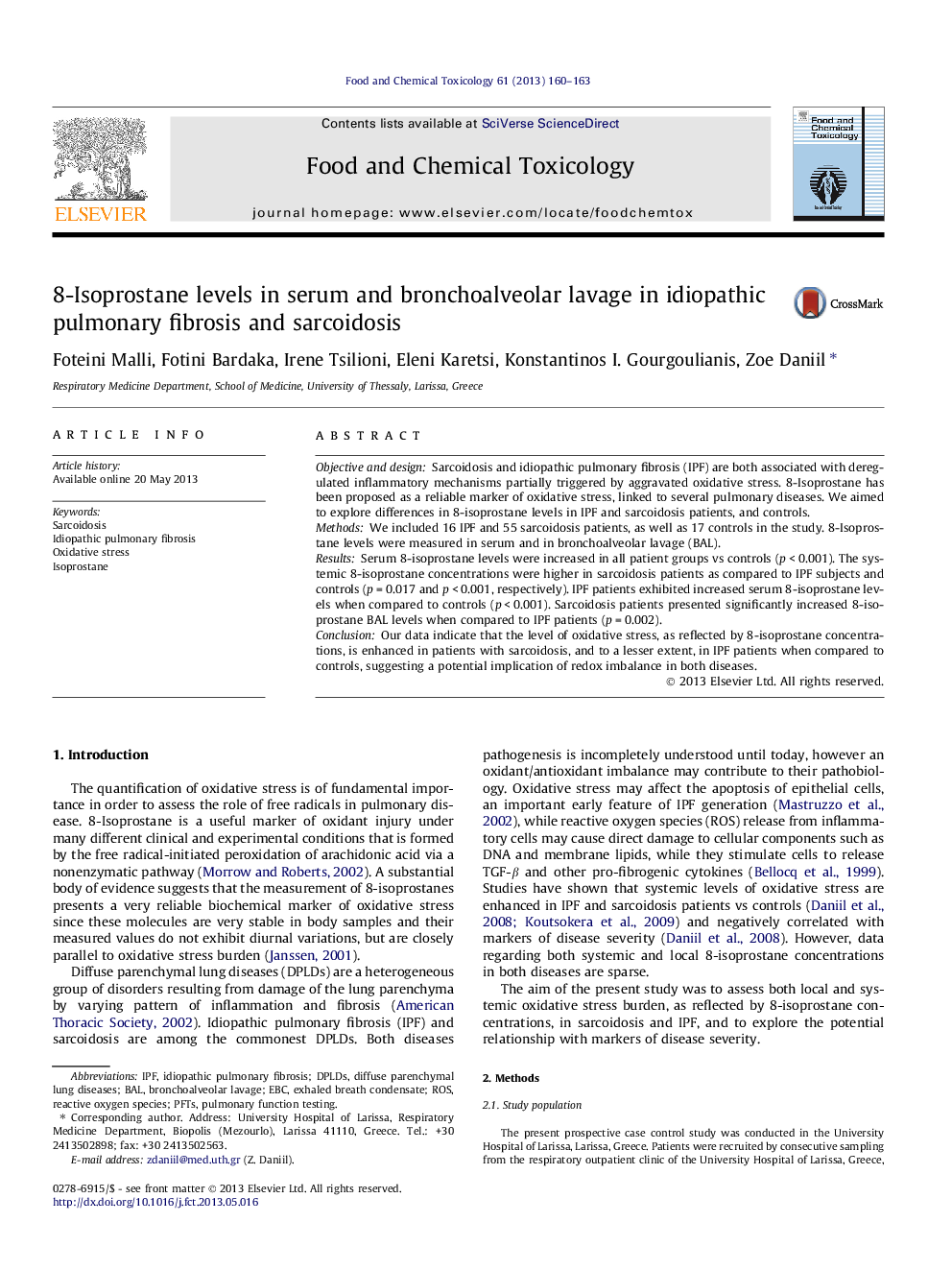| Article ID | Journal | Published Year | Pages | File Type |
|---|---|---|---|---|
| 2585176 | Food and Chemical Toxicology | 2013 | 4 Pages |
•In this study we explored 8-isoprostane levels in IPF and sarcoidosis patients, and controls.•8-isoprostane levels were measured in serum and in bronchoalveolar lavage.•Systemic 8-isoprostane levels were higher in sarcoidosis as compared to IPF subjects and controls.•Sarcoidosis patients presented increased 8-isoprostane BAL levels when compared to IPF.•Oxidative stress is enhanced in sarcoidosis both systemically and locally when compared to IPF.
Objective and designSarcoidosis and idiopathic pulmonary fibrosis (IPF) are both associated with deregulated inflammatory mechanisms partially triggered by aggravated oxidative stress. 8-Isoprostane has been proposed as a reliable marker of oxidative stress, linked to several pulmonary diseases. We aimed to explore differences in 8-isoprostane levels in IPF and sarcoidosis patients, and controls.MethodsWe included 16 IPF and 55 sarcoidosis patients, as well as 17 controls in the study. 8-Isoprostane levels were measured in serum and in bronchoalveolar lavage (BAL).ResultsSerum 8-isoprostane levels were increased in all patient groups vs controls (p < 0.001). The systemic 8-isoprostane concentrations were higher in sarcoidosis patients as compared to IPF subjects and controls (p = 0.017 and p < 0.001, respectively). IPF patients exhibited increased serum 8-isoprostane levels when compared to controls (p < 0.001). Sarcoidosis patients presented significantly increased 8-isoprostane BAL levels when compared to IPF patients (p = 0.002).ConclusionOur data indicate that the level of oxidative stress, as reflected by 8-isoprostane concentrations, is enhanced in patients with sarcoidosis, and to a lesser extent, in IPF patients when compared to controls, suggesting a potential implication of redox imbalance in both diseases.
